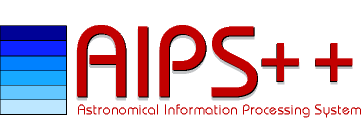How to use ClearDDTs (for AIPS++ developers)
- What is ClearDDTs?
- I've just received a defect report from ddts@aoc.nrao.edu what do I do?
- I want to work on my defects. What do I do?
- I want to submit a defect report. What do I do?
- I want to add more information to a defect report that I submitted
- My defect is really someone else's responsibility
- I'm lost!
- What is ClearDDTs?
ClearDDTS is a defect management system that AIPS++ uses to manage bug
reports (also known as defects). In AIPS++, a defect report is usually
submitted from inside AIPS++ using the bug() function.
AIPS++ places a very high priority on remedying defects, and we expect
defect reports to be assigned by project management and opened by the
responsible person within one working day. Note that we keep statistical
information on time-to-fix in particular and expect to use this as a
measure of the responsiveness of the project. It is also important to
keep track of other details of the defect such as origin and the
nature of the resolution.
ClearDDTS puts defects into one of a number of states. When you work
with a defect, you mainly move it from one state to another, adding
information as needed. In what follows, the characters (OPDR)
correspond to state identifiers used by ClearDDTs: (e.g. Open,
Postponed, Duplicate, Resolved, etc.).
- I've just received a defect report from ddts@aoc.nrao.edu what do I do?
- Log onto the DDTS system at the AOC:
http://aips2.nrao.edu/ddts/ddts_main
using your user name.
- Go to the "Query ID" page, and enter the defect report number.
- Find the line "Change State To:" and open(O) the defect. This is
the way you acknowledge receipt of the "defect" and the submitter
knows someone is working on their problem. Fill in as much information
as you can at the moment. "Detected in phase" is important. The phase
is the context in which the defect was found (e.g. specification,
design, implementation, alpha testing, etc.). If you don't know
the analysis time or estimate fix time, leave these as is.
- If you need more details about the defect, we recommend that you
correspond directly with the submitter. This information can and
should be added to the defect report either by an attachment (e.g. a
file) or by typing in an enclosure. Please don't use email and cc
ddts, since it can only deal with formatted mail.
- After opening the bug you have a number of possible courses.
These boil down to three main paths.
- Use Change State to postpone (P) the defect to a later date
- Use Change State to declare the defect a duplicate(D), or
- fix the problem, and then use Change State to declare that
the defect has been resolved.
- As noted above, once the problem has been solved you must change
the state of defect to resolved (R). If the fix required code
changes, note which files where changed and what the change was in
general terms. Also if you check a file back into the system, note
the bug report number in the checkin procedure.
- I want to work on my defects. What do I do?
- Log onto the DDTS system at the AOC:
http://aips2.nrao.edu/ddts/ddts_main
using your user name.
- Go to the "Query" page, and make a query to select defects
assigned to you. Remember to save this query so that next time
you enter ClearDDTS.
- Choose a defect to work on and then follow the steps described in
item 2.
- I want to submit a defect report. What do I do?
In general, we prefer that you use the bug() function from inside AIPS++.
If for some reason, you cannot, then point your web browser at
http://aips2.nrao.edu/docs/contactus/reportabug.html
- I want to add more information to a defect report that I submitted
- Log onto the DDTS system at the AOC:
http://aips2.nrao.edu/ddts/ddts_main
using your user name.
- Go to the "Query ID" page, and enter the defect report number.
- Goto the bottom of the page and enter either an attachment
(e.g. a file), or an enclosure (a message that you type in).
Note: those (OPDRV) correspond to state identifiers used by ClearDDTs.
- My defect is really someone else's responsibility.
- You can assign the defect to someone else.
- You can create a new defect with the real problem described
appropriately. Then use the Link button to link the new defect (the
child) to the original defect (the parent).
- I'm lost!
First read the on-line documentation. It's quite good. Failing that,
email Wes Young (wyoung@aoc.nrao.edu) for help.
Please E-mail any comments or questions about AIPS++ to
aips2-request@nrao.edu.
Copyright © 2000 Associated Universities Inc.,
Washington, D.C.

 Latest News
Latest News
 Latest News
Latest News